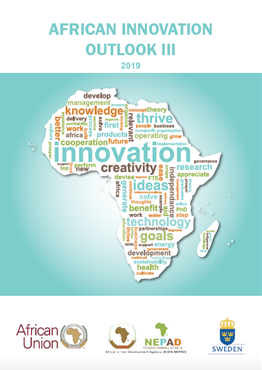There is a general consensus that science, technology and innovation are at the heart of development, and that investment in this sphere is critical to ensuring long-term growth. To this end, in 2014, African Heads of State and Government adopted the Science, Technology and Innovation Strategy for Africa 2014-2024, (STISA 2024), as a framework for S&T and innovation development in the Member States. From a measurement perspective, STISA (2024) calls for the monitoring and evaluation of policies which have been implemented and, for this to happen, surveys of R&D and of innovation in Member States are needed. The African Union recognises that for Member States to achieve Agenda 2063 and STISA (2024), science, technology and innovation must be at the centre of the developmental agenda. Hence these frameworks articulate the African Union Agenda for harnessing STI to boost economic growth and improve the lives of African people.
The African Union Development Agency (AUDA-NEPAD) in collaboration with the African Union Commission, AU Member States, and other partners has implemented the African Science, Technology and Innovation Indicators Initiative (ASTII) since 2007. The activities which have been carried out include strengthening the capacity of survey teams at national level, back-stopping research, monitoring development and innovation surveys in a total of 43 countries, supporting the analyses of survey data and the publication of the African Innovation Outlook. The ASTII Initiative has published two volumes of the AIO published in 2010 and 2014 respectively, with this being the third edition.
The Third African Innovation Outlook (AIO-3) presents the status of Research and Experimental Development (R&D) and Innovation performance in Africa, focusing on the period from 2013 to 2016. The information is derived from R&D and Innovation surveys conducted periodically by African Union Member States as part of the African Science Technology and Innovation Indicators (ASTII) initiative. This Outlook builds on the experience and expertise developed in Member States over the years and provides improved insights based on lessons learnt from the previous editions.
At the commencement of the project, the first African Intergovernmental Committee on Science, Technology and Innovation Indicators met in Mozambique in 2007 and adopted the Frascati Manual (OECD 2002) and the Oslo Manual (OECD/Eurostat 2005) as guidelines for the collection and interpretation of data on R&D, as well as on innovation in the business sector. This avoided the considerable burden of developing new manuals but did not preclude the production of additional guidelines which addressed the specificities of the economies in Africa. The innovation policy, and how it is implemented, has been an ongoing discussion in the research community for the last decade.
It is important to understand the data on STI indicators and to monitor them, particularly as it demonstrates the progress that African countries are making to meet STI goals. In this regard, and as part of the ASTII programme, AUDA-NEPAD and its partners have developed and selected key indicators for tracking the implementation of STISA (2024), which aligns with the goals of Agenda 2063 and the Sustainable Development Goals.
The data and indicators on research and experimental development (R&D) support policy and decision makers to understand, monitor and effectively manage financial and human resources allocated to perform R&D activities, set sector-specific R&D investment targets, and design clear policy initiatives for R&D. Furthermore, the analysis also helps to identify institutions, or firms, which are performing well and need support -- the kind of support which shows how well aligned the R&D activities are to national development objectives and priority areas such as manufacturing, energy, health, ICT, agriculture, etc.
Innovation indicators provide information on the rate of innovation in the countries, sources of relevant ideas and information for innovation, objectives for innovation, and fundamental drivers of innovation at firm level. Additionally, it highlights the importance of support measures on innovation activities, reveal cooperation arrangements or strategic alliances for innovation, and identify key obstacles that discourage innovation. Both the informal sector and innovations in sectors other than Business enterprises will be the set of new layers to add to the existing foundation of data measurement in Africa. Some of these factors may be more pronounced in one country than another due to differences in the innovation policy environments. Aspects such as partnerships, cooperation, networking, and innovation support activities may show insights that can be addressed at national level, as well as regional level.




